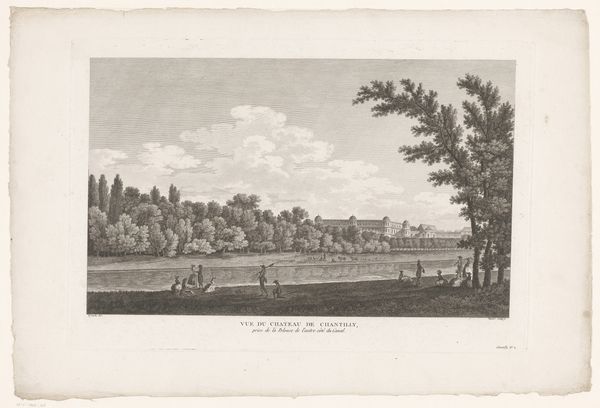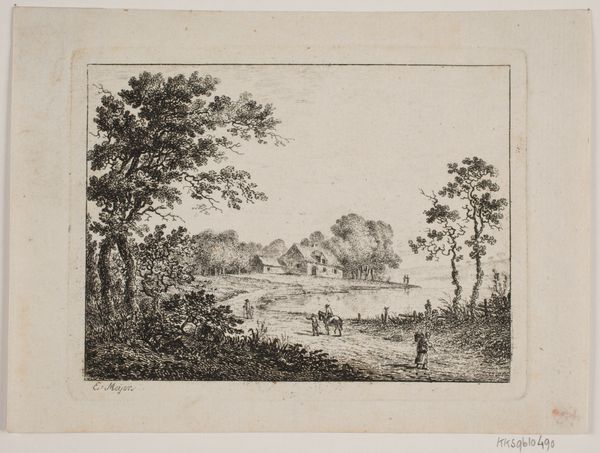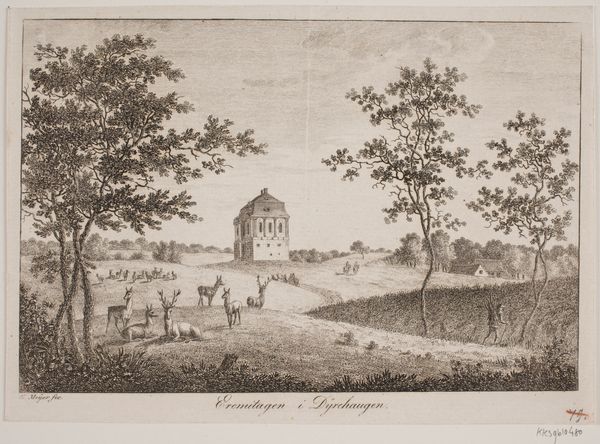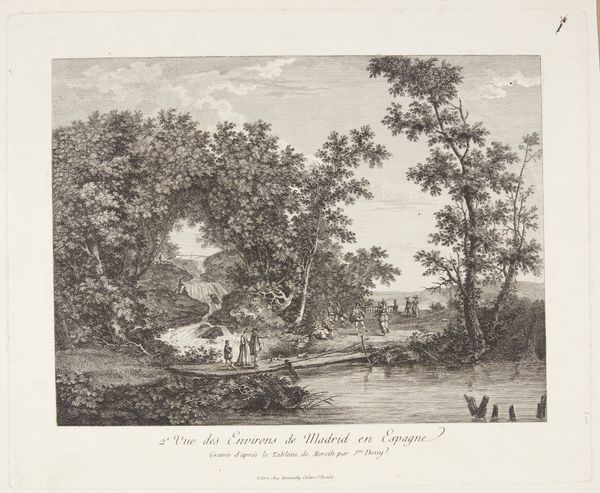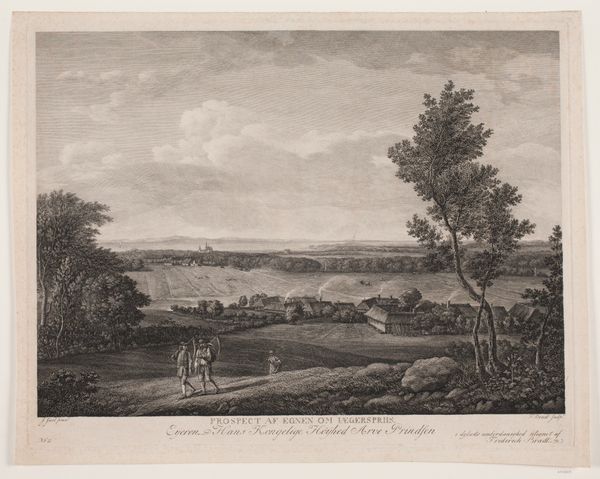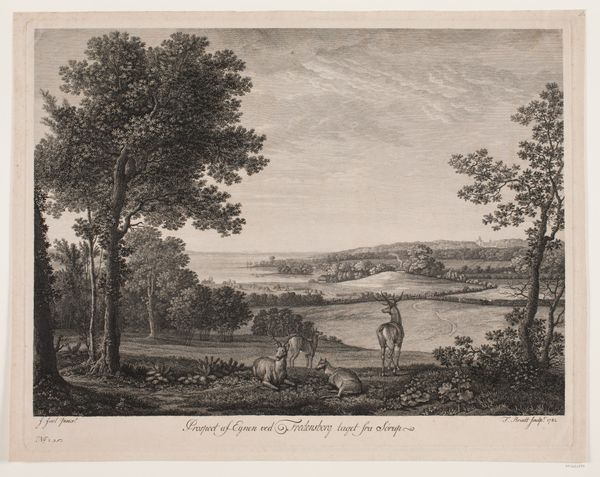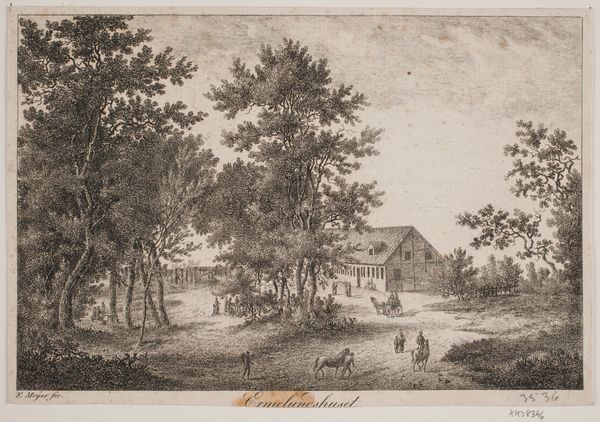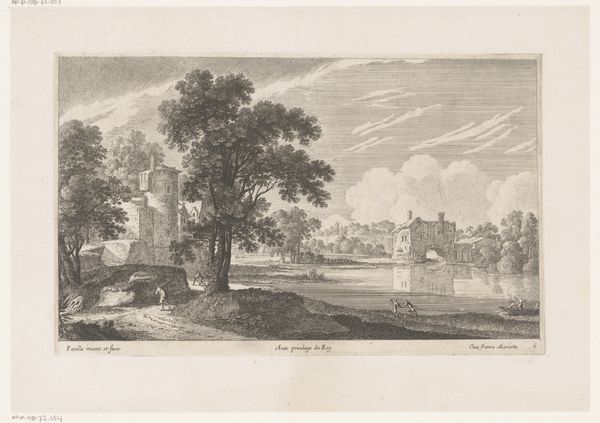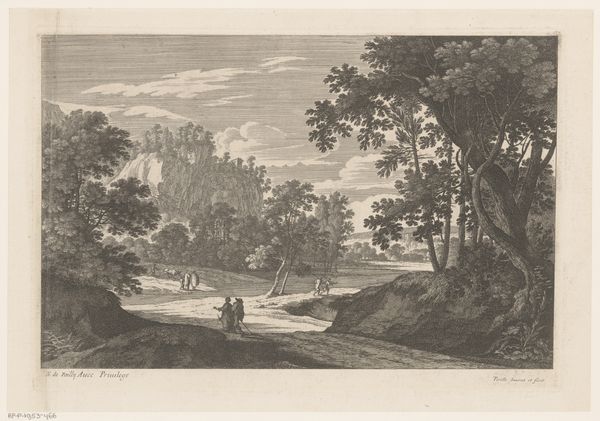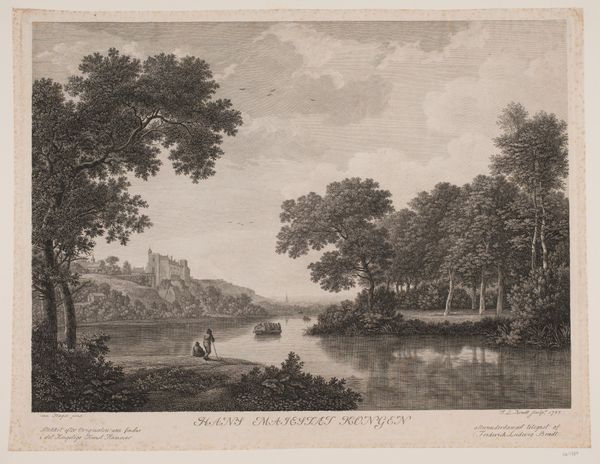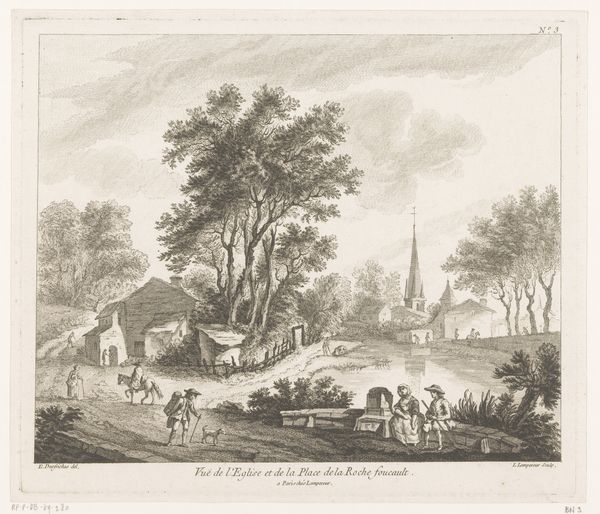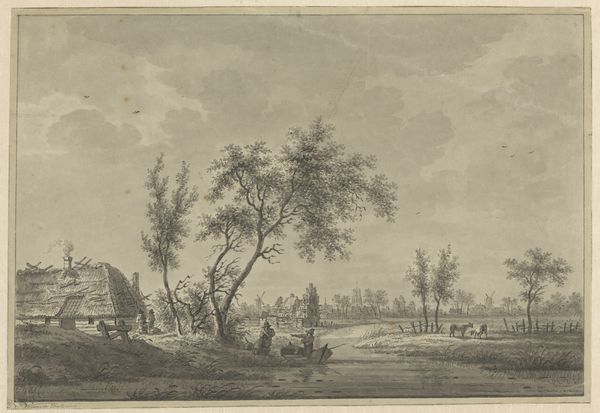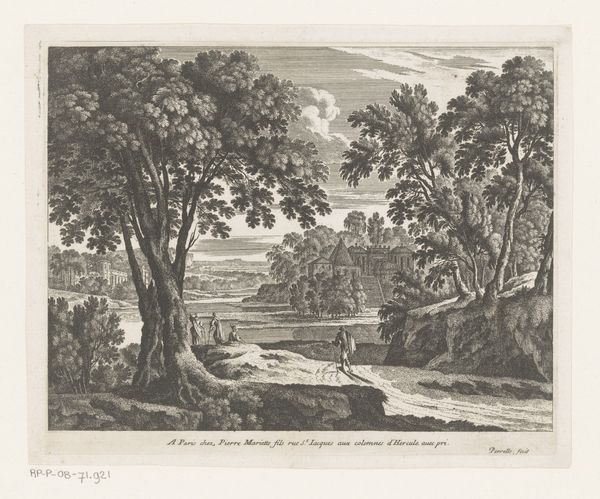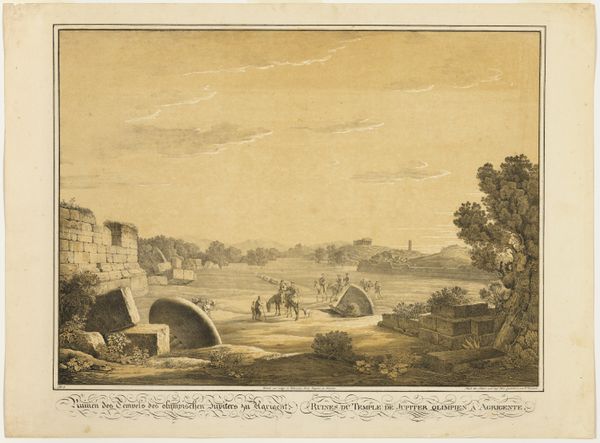
print, engraving
# print
#
landscape
#
etching
#
line
#
academic-art
#
engraving
#
realism
Dimensions: 145 mm (height) x 210 mm (width) (bladmaal)
Editor: This is Elias Meyer's "Ordrups Krat," an etching and engraving from between 1763 and 1809. The landscape is pleasant, serene even. How do you interpret this work in its historical context? Curator: On the surface, it's a tranquil pastoral scene, almost idyllic. But let's dig a bit deeper. Landscapes in this era often served more than just aesthetic purposes. Consider who this idealized vision might be for and what it obscures. Who has access to this tranquility, and whose labor enables it? What are your thoughts? Editor: I didn’t think about it that way. I suppose I just saw trees, some figures, sheep... sort of picture-postcard-ish, though lovely. So you’re saying there's a political element? Curator: Absolutely. Representations of the land are never neutral. Look at the composition itself - who is in the light and who is in the shade. It presents a curated perspective of Danish life, very much controlled. Do you think it celebrates nature itself, or rather, the power structures that lay claim to it? Editor: It does make me wonder what was actually happening on that land, versus what Meyer chose to portray. Are the farmers working that land included in this depiction? Is there anyone labouring at all in this artwork? Curator: Exactly. Meyer's artistic choices offer a very specific view and perpetuate certain socio-political narratives around land ownership. It encourages us to challenge visual histories. Editor: That's fascinating. I'll never look at a landscape the same way again! Thanks for shedding light on what lies beneath the surface. Curator: And thank you for seeing art as something deeply connected with history, power, and everyday life!
Comments
No comments
Be the first to comment and join the conversation on the ultimate creative platform.
